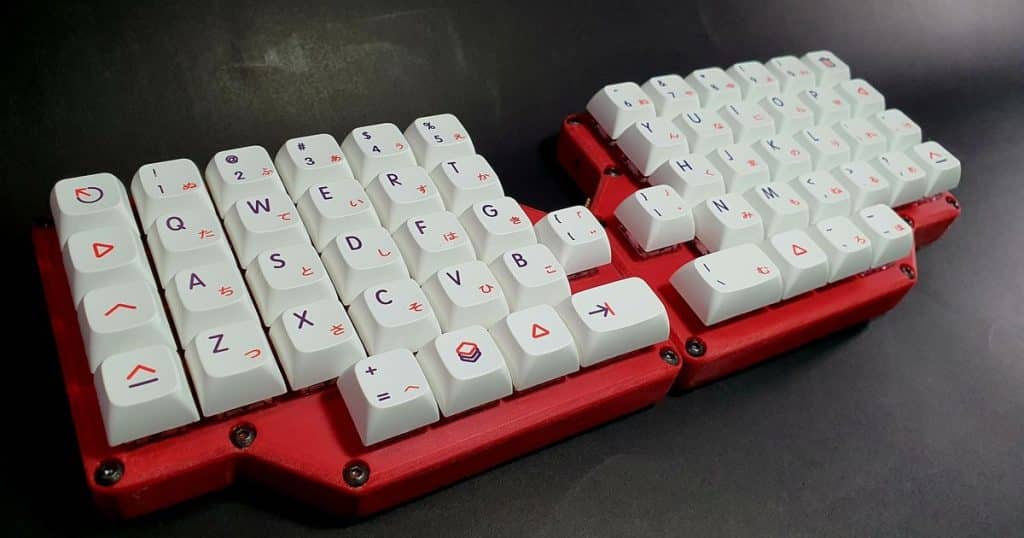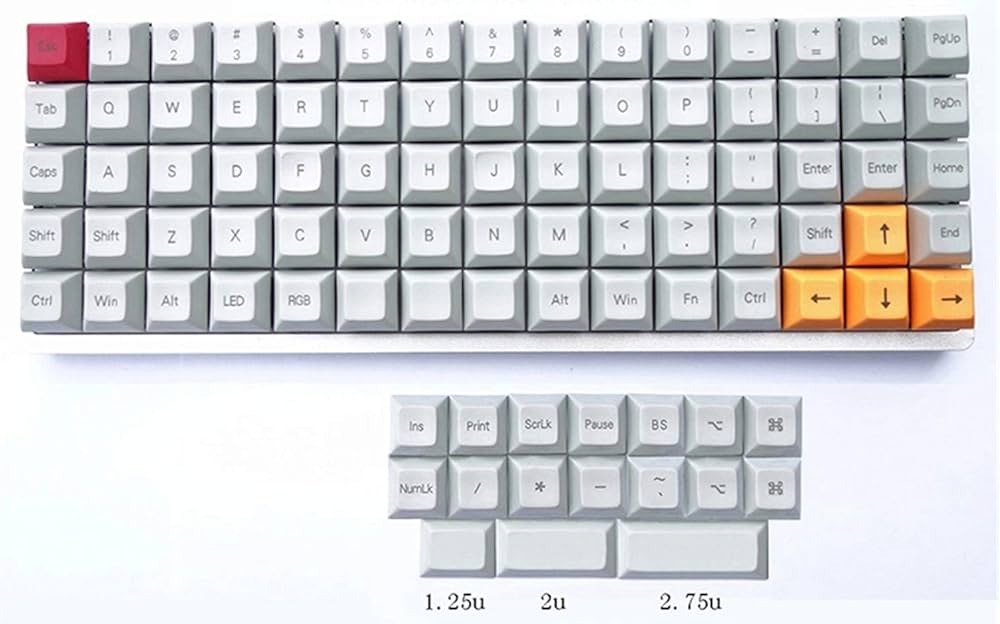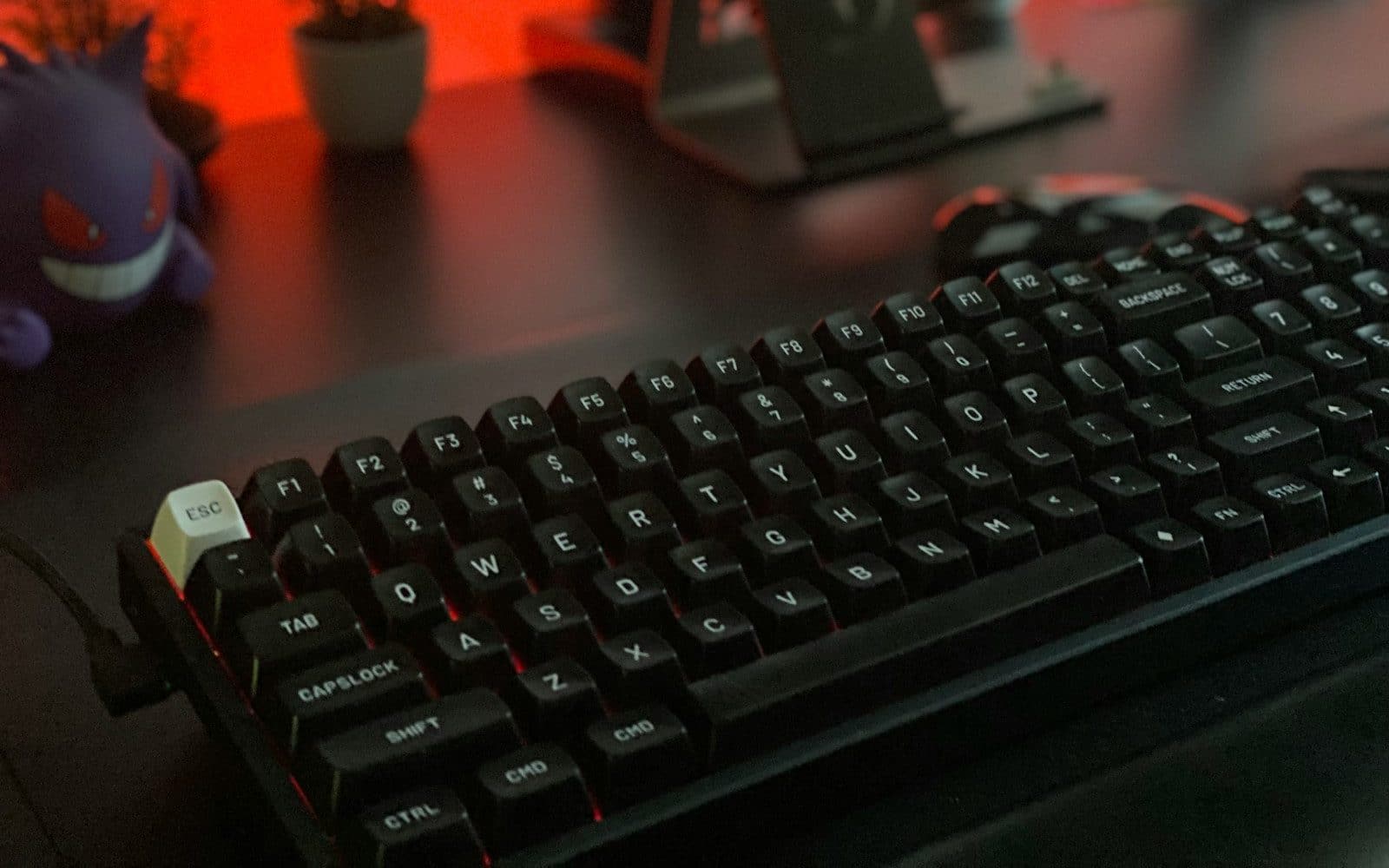Ortholinear keyboards offer a different approach to keyboard design that aligns keys in a grid rather than the staggered layout found on traditional keyboards. Proponents of ortholinear keyboards suggest that this layout mirrors the natural motion of fingers, potentially reducing travel time between keys and increasing typing efficiency. Skeptics, however, argue that the learning curve and muscle memory developed on standard keyboards can make the transition difficult, with questionable benefits.

The debate regarding the superiority of ortholinear keyboards centers on ergonomics, typing speed, and accuracy. Extensive use of standard keyboards has informed the general population’s typing habits, which may present a barrier to adopting a new layout. On the other hand, ortholinear keyboards are designed with the intent of reducing finger movement and strain. This design rationale appeals particularly to professionals who spend significant time typing and are concerned with long-term comfort and reducing the risk of repetitive strain injuries.
Empirical evidence comparing the efficiency of ortholinear versus conventional keyboards is limited, and much of the available research draws on anecdotal reports and personal preferences. As a result, the consideration of whether ortholinear keyboards are better is often subjective, relying heavily on individual user experience and adaptability. Thus, ortholinear keyboards demand a period of adjustment and personal trial to truly evaluate their ergonomic advantages.
Fundamentals of Ortholinear Keyboards
Ortholinear keyboards are distinct in their grid-like key alignment, offering a unique approach to typing and customization. They often prompt discussion regarding their potential ergonomic benefits and layout efficiency.
Definition and Design
Ortholinear keyboards are designed with keys aligned in a strict grid rather than staggered as seen in traditional keyboards. Each key is directly in line with the key above and below it, offering a symmetric aesthetic and a uniform travel distance for each finger. This design deviates from the typical QWERTY layout and can be found in various sizes, including 40%, 60%, and full-size variants.
Ergonomics and Typing Experience
The typing experience on an ortholinear keyboard often requires an adjustment period, yet some users report fewer finger movements and increased comfort. Proponents suggest that the straight travel paths for each finger may reduce strain and the potential for repetitive stress injuries. However, ergonomics is highly individual, and what works for one person may not be comfortable for another.
Keyboard Layout and Key Customization
Ortholinear keyboards typically feature a highly customizable layout. Users can reprogram keys and create layers for additional functionality, which can be tailored to specific workflows or applications.
- Key Programming: Allows for remapping keys and macros.
- Layers: Enable multiple functions per key.
Custom keycap sets designed for ortholinear layouts are also available, with options varying from simple color choices to complex thematic designs.

Comparative Analysis of Ortholinear vs. Traditional Keyboards
The distinction between ortholinear and traditional keyboards lies in the key layout and ergonomics, with implications for typing efficiency, learning curve, and cost-related considerations.
Typing Efficiency and Speed
Ortholinear keyboards employ a grid layout where keys are aligned both horizontally and vertically, aiming for a more natural finger movement. Studies suggest that some users may experience increased typing speed and efficiency, as their fingers travel less distance. In contrast, traditional staggered keyboards have been the standard for decades, and while they may not be optimized for finger travel, many typists have reached high speeds through muscle memory and practice.
Learning Curve and Adaptation
Adapting to an ortholinear keyboard can be challenging; the layout is significantly different from traditional staggered keyboards. New users often face a learning period during which their typing speed may temporarily decrease. Conversely, traditional keyboards present a lower learning curve as they are more prevalent and familiar to the majority of users.
Availability and Cost
Ortholinear keyboards are less common and can be harder to find or more expensive than their traditional counterparts. They are often sold by specialized retailers or as custom, build-your-own kits. Traditional keyboards, on the other hand, come in a wide range of prices and are widely available, making them a more accessible option for most consumers.
User Preferences and Adaptability
The subjective nature of keyboard preferences impacts the adaptability of users to ortholinear keyboards. Factors such as user comfort, typing habits, and perceived productivity play a significant role in whether an individual might prefer an ortholinear layout over traditional staggered designs.
Professional and Casual Users
Professionals may be initially resistant to ortholinear keyboards due to muscle memory developed on staggered ones. However, some find the alignment of keys reduces finger travel, potentially increasing typing efficiency. Casual users may prioritize comfort and familiarity, and their adaptability varies based on willingness to relearn key placement.
- Typing Efficiency: Possibly improved through reduced finger movement.
- Muscle Memory: Requires retraining from staggered layout.
- Comfort: Highly subjective and dependent on individual preference.
Gaming and Programming Usage
Gamers often seek keyboards that allow for rapid and precise key presses which can be an advantage of ortholinear keyboards. Programmers might appreciate the uniform grid for easier access to function and special characters, potentially streamlining their workflow.
- Rapid Key Presses: May be enhanced by evenly spaced keys.
- Special Characters: Accessibility can be increased for programming needs.
Community and User Support
The community around ortholinear keyboards tends to be enthusiastic, offering support and customization options. User feedback often leads to iterative design improvements in ortholinear layouts.
- Support: Enhanced by a dedicated community.
- Customization: Highly supported, with various options for key mapping and physical modifications.

Final Considerations
In assessing whether ortholinear keyboards are better, one must weigh the tangible benefits against any potential drawbacks, and consider individual user needs.
Pros and Cons Summary
| Pros | Cons |
|---|---|
| Enhanced Ergonomics: They offer a straighter typing position, which can reduce finger travel and fatigue. |
Learning Curve: New users may struggle with the unfamiliar key layout. |
| Customizability: Users can often reprogram keys to suit their workflow. |
Limited Availability: They are less commonly found in mainstream retail stores. |
| Compact Design: Many models have a smaller footprint, saving desk space. |
Cost: High-quality models may be more expensive than traditional keyboards. |
Recommendations for Different Users
- Programmers and Writers: Ortholinear keyboards can be a smart choice for those who type for extended periods, offering a layout that can help reduce strain.
- Gamers: While they can be used for gaming, the non-standard key arrangement might not be ideal for all.
- Casual Users: They may prefer sticking to traditional keyboards unless they’re keen on exploring a more ergonomic option.
- Keyboard Enthusiasts: Those who enjoy customizing their typing experience will appreciate the programmability and unique keycaps often available for ortholinear models.
Conclusion
In conclusion, the decision to choose a keyboard that suits your needs involves weighing various factors. Enhanced ergonomics can lead to a more comfortable typing experience, reducing fatigue and possibly improving productivity. Customization options allow for a more personalized and efficient workflow, and a compact design can free up valuable desk space.
On the flip side, the learning curve associated with new keyboard layouts, the limited availability of specialized models, and potentially higher costs are considerations that must be balanced against the benefits. Ultimately, the right keyboard is one that aligns with your preferences, work habits, and ergonomic requirements, ensuring a seamless integration into your daily routine.

Experience is what matters at the end!!
Hi! This is Jacob Jay – founder of Keyboardgear.com! From childhood to adulthood, I’ve always remained passionate about IT, and the revolution in this industry, especially gaming on the PC can’t go out of my way. Since I’m an enthusiastic gamer, and I love to experience various gaming accessories, particularly mechanical keyboards, that really boost my gaming adventure manifolds. So, my nerve cells hit me to transfer my experiences into word form and share with others to identify the ideal keyboards perfectly fit for their gaming modes.
I know very well how hard it is to find the high-quality items available on the internet that ought to be exactly the same as seen as on the screen. But the counterfeiters have ruined the user’s trust. As I have passed all such situations, I’m obliged to deliver the genuinity and express the same as what I am saying.
So, now, I’m working on the mission to provide very helpful and frankly but trustworthy reviews and guides about various mechanical keyboards, mouses, and other gaming accessories as per my personal experiences and sound knowledge.
